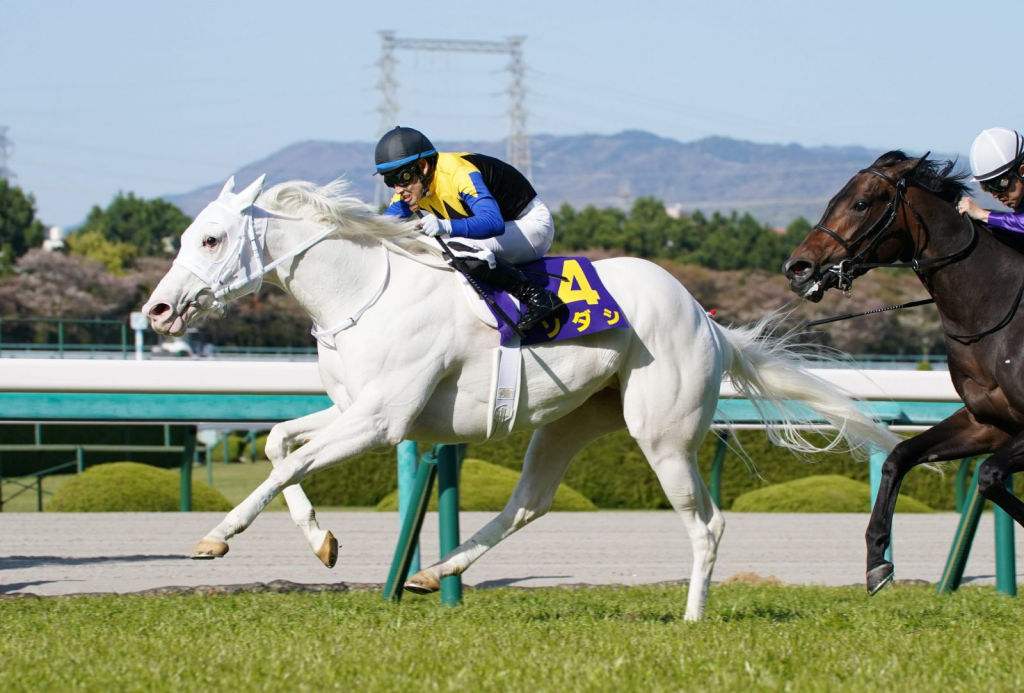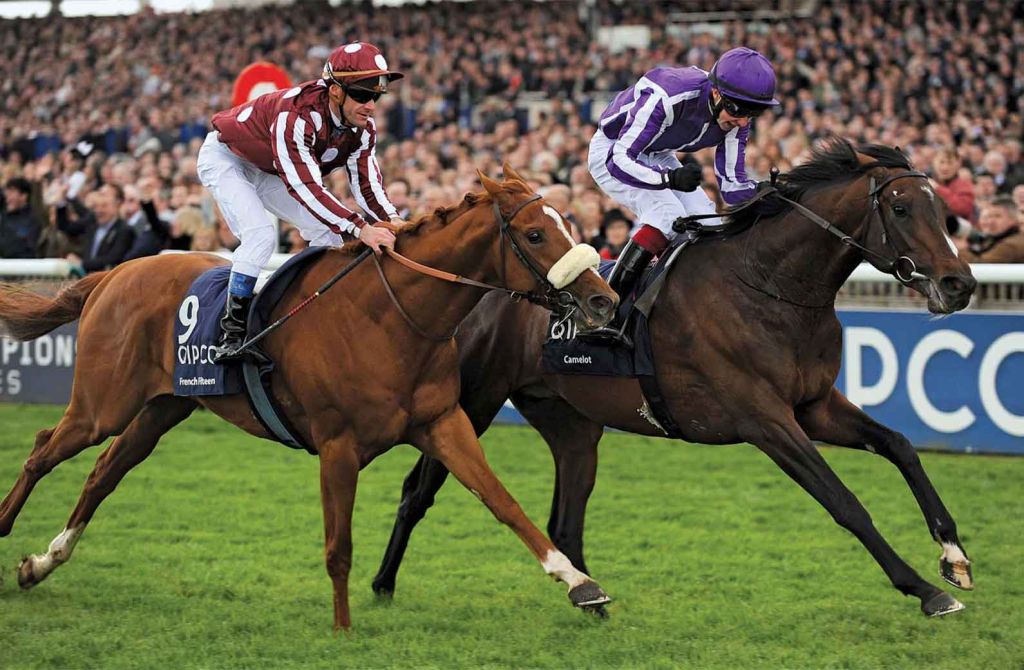Introduction
Horse racing has a language all its own—a unique lexicon built over centuries of tradition, sport, and competition. For newcomers and seasoned enthusiasts alike, understanding the essential terms can be the key to truly enjoying the sport. In this comprehensive guide to Horse Racing Terminology A-Z, we will walk through the essential terms used throughout the world of horse racing, providing you with a deep understanding of the lingo that surrounds the track. Whether you’re watching the Kentucky Derby, placing a bet at your local racecourse, or just want to sound savvy in a conversation, this guide has you covered.
A Is For Allowance And Apprentice
Kicking off the journey into Horse Racing Terminology A-Z, we begin with “Allowance,” which refers to a race where the horses are assigned weights based on specific conditions like previous wins or earnings. Unlike claiming races, horses in allowance races are not for sale. Then there’s “Apprentice,” which refers to a young or inexperienced jockey, often receiving weight allowances to level the playing field. These terms are foundational to understanding how races are structured and how jockeys earn their experience on the circuit.

B Is For Bay And Break
As we move through Horse Racing Terminology A-Z, “Bay” describes a common horse color, typically a reddish-brown coat with a black mane and tail. “Break” is another crucial term, referring to how a horse starts of the gate. A good break can be the difference between winning and losing, especially in sprint races. Learning these basics helps any fan follow the early moments of a race more clearly.
C Is For Claiming And Colt
The letter C in Horse Racing Terminology A-Z introduces us to “Claiming,” which refers to races where every horse is for sale at a predetermined price. Claiming races are often where newcomers to ownership enter the game. Meanwhile, a “Colt” is a young male horse under the age of four. Understanding the gender and age categories is crucial for evaluating a horse’s potential and its racing history.
D Is For Derby And Distance
Next in Horse Racing Terminology A-Z, we have “Derby,” a term often used for prestigious races for three-year-old horses, such as the Kentucky Derby. “Distance” plays a major role in strategy and preparation, as different horses excel at different lengths, ranging from short sprints to long-distance marathons. Knowing a horse’s preferred distance can provide insights into its potential performance.
E Is For Entry And Exacta
“E” in Horse Racing Terminology A-Z brings us to “Entry,” which refers to two or more horses from the same stable entered into the same race, often combined for betting purposes. An “Exacta” is a bet type requiring the bettor to pick the first and second-place finishers in the correct order. These terms are particularly important when understanding race day programs and betting strategy.
F Is For Furlong And Filly
The term “Furlong” represents a unit of distance used in horse racing, equivalent to one-eighth of a mile. It’s essential to grasp this term when reading race distances. “Filly” denotes a young female horse under four years of age. These distinctions are integral when analyzing races by gender and age group. Both are central to your learning journey through Horse Racing Terminology A-Z.
G Is For Gelding And Gate
Continuing with Horse Racing Terminology A-Z, “Gelding” refers to a castrated male horse, often calmer and more focused in competition. The “Gate” is where every race begins, and how a horse behaves at the starting gate can signal much about its temperament and readiness. These terms enhance your understanding of a horse’s profile and behavior.
H Is For Handicap And Head
“H” in Horse Racing Terminology A-Z introduces us to “Handicap,” a race in which horses carry different weights assigned by the handicapper to equalize their chances of winning. “Head” can refer both to a margin of victory and to the front portion of the horse. Margins like head, nose, and neck are frequently used to describe close finishes, vital for understanding race results.
I Is For Inquiry And Inside
Moving along in Horse Racing Terminology A-Z, “Inquiry” denotes a review by the race stewards after a race if there’s suspicion of a rule violation. The “Inside” refers to the innermost rail of the track. Horses starting from or staying close to the inside often save ground, which can be a tactical advantage depending on the race conditions.
J Is For Jockey And Juvenile
Under the “J” heading in Horse Racing Terminology A-Z, we come to “Jockey,” the athlete who rides the horse during a race. A jockey’s skill, weight, and strategy play a significant role in a horse’s success. A “Juvenile” refers to a two-year-old horse, often in the early stages of its career. These races are key indicators of future stars in the sport.
K Is For Key Horse And Keen
“K” in Horse Racing Terminology A-Z reveals “Key Horse,” which refers to a horse used as the primary choice in exotic wagers like exactas or trifectas. A “Keen” horse is one that is overly eager or hard to control early in a race, which can affect performance. Recognizing these traits is useful in predicting race dynamics.

L Is For Layoff And Length
In Horse Racing Terminology A-Z, “Layoff” refers to a period when a horse has not raced, often due to rest or recovery. Understanding the impact of a layoff is crucial when assessing a horse’s form. A “Length” is a measurement used to describe the distance between horses in a race, equivalent to the length of a horse’s body. These metrics help fans and bettors interpret finishing margins.
M Is For Maiden And Mudder
“M” introduces “Maiden,” a horse that has never won a race. Maiden races are special events exclusively for these horses. A “Mudder” is a horse that performs exceptionally well on muddy or wet tracks. These terms are essential in understanding race conditions and horse suitability, and they feature heavily throughout Horse Racing Terminology A-Z.
N Is For Nose And Nomination
As we explore more of Horse Racing Terminology A-Z, “Nose” refers to the smallest official margin by which a horse can win. It’s an exciting and dramatic element of racing. “Nomination” involves registering a horse for a specific race, often well in advance. The nomination process is a part of long-term planning in a horse’s career.
O Is For Odds And Off Track
The “O” section of Horse Racing Terminology A-Z brings us to “Odds,” which determine the potential payout from a bet and reflect the public’s opinion of each horse’s chances. “Off Track” conditions occur when the racing surface is affected by weather, such as rain, turning the track sloppy or muddy. These factors play heavily into race-day strategy.
P Is For Paddock And Post Time
“P” in Horse Racing Terminology A-Z includes “Paddock,” the area where horses are saddled and paraded before the race. Observing horses in the paddock gives insights into their physical condition and temperament. “Post Time” is the scheduled time for a race to begin, and delays can occur due to weather or technical issues. These are key parts of the live race experience.
Q Is For Quarter Horse And Quinella
Though rarer in thoroughbred racing, “Quarter Horse” races are short sprints, usually around a quarter of a mile, known for explosive speed. A “Quinella” is a betting term that allows bettors to select two horses to finish first and second in any order. While Q terms are limited, they still hold a place in Horse Racing Terminology A-Z.
R Is For Route And Runner
“Route” in Horse Racing Terminology A-Z denotes a race longer than one mile, typically testing a horse’s stamina. A “Runner” simply refers to a horse that is officially entered and competing in a race. These terms are frequent in race day programs and commentary, offering a quick way to gauge race type and participation.
S Is For Stakes And Silks
“S” in Horse Racing Terminology A-Z highlights “Stakes” races, which are high-quality events with significant prize money, often involving horses with proven track records. “Silks” refer to the colorful jackets worn by jockeys, representing the owner’s stable. Both are iconic elements of horse racing tradition and spectacle.
T Is For Trifecta And Trip
“T” introduces us to the “Trifecta,” a bet in which the bettor must select the first three finishers in the correct order. It offers high risk and high reward. A “Trip” refers to the journey a horse experiences during a race, including obstacles or smooth sailing. Trip handicapping is a valuable skill in analyzing past performances within Horse Racing Terminology A-Z.
U Is For Underlay And Under Tack
“Underlay” refers to a horse whose odds are lower than its true probability of winning, often avoided by sharp bettors. “Under Tack” refers to a timed workout in a sale setting, allowing potential buyers to assess a horse’s speed. These terms offer insight into betting strategies and pre-race assessments.
V Is For Vet Scratch And Victory
In the world of Horse Racing Terminology A-Z, a “Vet Scratch” occurs when a horse is removed from the race by a veterinarian due to health concerns. “Victory” is self-explanatory but represents the ultimate goal of all the training and strategy in the sport. These terms are central to both safety and celebration in racing.
W Is For Weight And Work
“W” includes “Weight,” which a horse must carry in a race, combining the jockey and any additional lead added to meet regulations. “Work” refers to a horse’s timed training run, critical in assessing readiness. These are essential for understanding how horses are prepared and leveled for competition in Horse Racing Terminology A-Z.
X Is For X-chromosome And X-ray
Though limited in number, “X-Chromosome” highlights genetic traits passed from mothers to offspring, with implications for breeding and stamina. “X-Ray” refers to diagnostic imaging used to detect injuries in horses, a necessary tool in maintaining equine health. Even the more obscure terms in Horse Racing Terminology A-Z play a significant role in the sport.
Y Is For Yearling And Yielding Track
“Yearling” identifies a horse that is one year old and often still in training or preparation. A “Yielding Track” is a soft turf surface due to moisture, but not as saturated as a soft or heavy track. These terms are often encountered in breeding and turf racing discussions and are key pieces in Horse Racing Terminology A-Z.

Z Is For Zenyatta And Zero
Finally, wrapping up Horse Racing Terminology A-Z, “Zenyatta” is the name of one of the most famous modern racehorses, known for her dramatic come-from-behind victories. “Zero” often comes up in discussions about odds, payouts, or even the number of wins a maiden horse has. As the last entries, they round out the expansive world of racing terms.
Conclusion
By exploring Horse Racing Terminology A-Z, you now have a strong foundation in the language of the sport. From understanding the finer details of furlongs and fractions to appreciating the significance of a paddock parade or a trifecta ticket, every term carries meaning that can deepen your appreciation and engagement with horse racing. Whether you’re a bettor, a fan, or just someone fascinated by this historic sport, knowing the complete Horse Racing Terminology A-Z gives you the knowledge to confidently navigate the trackside conversations, interpret programs like a pro, and truly enjoy the thundering spectacle of horse racing.

